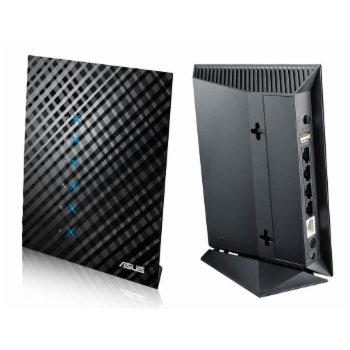How often do you buy a router? Well, that depends on the lifetime of previous router I bought. And if I happen to get a bad quality china made, then I may have to buy a new one next Sunday. Leave it though, let’s talk about what are those specs that should be looked into, while buying a budget router.
Talking about market of routers, many new routers are now available in market, but due to not much info of new routers, we end up looking at shelves full of overpriced and buggy pre-draft 802.11ac wireless routers, well that case will end here.
As the Wi-Fi Alliance certified the Wireless-AC standard – it’s been nearly a year since it happened – but there are now several entry level 802.11ac routers available at affordable price points. All of them promise varying levels of increased speed over last generation’s 802.11n standard, and at far less cost.
So, when you are in market next time, here what to look for when buying a budget router.
Speed Rating
Speed is the first thing we look into while buying routers. Wireless routers typically advertise their speed in megabits per second (Mbps). Older Wi-Fi models offered 11 Mbps, mid-range 802.11g routers 54 Mbps and the 802.11n routers claim up to 450 Mbps, new routers in market (802.11ac), marketed as AC750 models, offers up to 300MB/s on the 2.4GHz channel and 433MB/s on the 5GHz channel, while the other three sport AC1200 designations and also offer 300Mb/s on the 2.4GHz channel, but bump up to 867Mb/s on the 5GHz channel.

USB Ports
If you plan on plugging an external hard drive, flash drive, or printer into your router for sharing files or printing over your home network, you’ll want to make sure it has at least one USB port. It’s even better if your router happens to have a USB 3.0 port, though that’s a rare sight in budget territory.
LAN and WAN Ports
Virtually all wireless routers these days come with a built-in switch that features four LAN Ports. Unfortunately, some router makers still equip lower-end models with 10/100 LAN Ports instead of 10/100/1000(gigabit) LAN Ports, and the same goes for WAN. This creates an unnecessary choke point doling out data, so be sure to pay close attention to the speed rating of both LAN and WAN.

Warranties
Wireless Internet router manufacturers always provide a warranty package together with their equipment. The length and terms of these warranties vary widely. A better warranty may indicate a manufacturer more committed to support their products, while a lesser warranty could indicate a somewhat lesser standard of product quality or reliability. Always consider wireless router warranties when making your purchase decision.
Size and Style
In many households, wireless Internet routers are installed in a visible central area of the residence. Purchasing a stylish router can make this an attractive addition to the decor that you will be proud to show family and friends. Routers vary in both size and shape. If you plan to install the router in a confined space, ensure you pick one with a suitable form factor. Small business owners and others interested in portability may likewise consider the class of “travel router” products.
- How to Configure Cisco Linksys X2000 / X3000 Series Router with NTC ADSL Internet
- How to Configure TP-Link Router for NTC ADSL
- [How to] Set up Linksys by Cisco Wireless G router for NTC ADSL
- [How to] Configure SMC Routers – EliteConnect
- How to Configure DIGICOM ADSL Router for NTC ADSL
- Time for Wireless Pocket Router, what’s that?
- Wireless Home Networking with Virtual WiFi Hotspot










